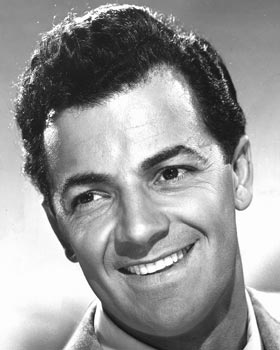

#Cornel wilde beard movie#
One feels King Arthur is supposed to be an admirable figure but this movie undercuts him at every chance. The trouble with this is one is disinclined to sympathise today with any king who would make such a law. Some spirited action as the lovers are apprehended post fragrante delicto - L escapes, G is caught.Ī pyre is built to burn Guinevere, and this is all so like the turn the plot takes in CAMELOT that I’m wondering how much of this is TH White, but no, it seems to be part of fairly early myths, just stuff I wasn’t familiar with (and not covered by Boorman).Ĭamelot has a hunchbacked, cackling bellringer, just to make things feel sufficiently classical.Īrthur, it turns out, is responsible for a law which says adulteresses must be burned - he’d like to make an exception, but this would destroy his claim to be a just king. At least Uther was on his way into battle, so there was a reason for having it on (but perhaps not while having it off).
#Cornel wilde beard full#
I can’t decide if this is more or less loopy than the full plate mail rogering scene in EXCALIBUR. It’s not at all clear why Lancelot has chosen to visit his love wearing full-length chainmail.

Lewis’s claim to have slipped the suggestive scene past Wilde on his day off looks weaker - I love JHL but he wouldn’t be the first director to steal credit for an idea. The image is fuzzy, veiled by the bed’s translucent canopy, but the implication is pretty clear. The sex scene - it’s 1963 so there’s implied nudity with both characters in bed and who knows if anyone’s got one foot on the floor? - confirms my suspicions about Cornel Wilde, as producer, having a hand in the infamous “cunnilingus scene” in THE BIG COMBO, where Richard Conte descends out of shot and Jean Wallace continues to react fervently to some unseen stimulus - because they do the same thing here! True, Wilde has some unmuffled dialogue from below frame, but what’s happening in the gaps between sentences? Wallace’s equally fervid performance provides a hint. Griselda is my favourite character, and she’s only been in one shot. But this is a disappointingly magicless Camelot, in which Merlin’s expertise is limited to knowledge of soap. Some versions of the saga make Modred/Mordrid/Mordred the son of Morgan le Fey, who is usually a sorceress, so he’s not far removed from black magic. The very unchivalric adultery is the talk of the court - Lancelot is tempted to slip away back to Brittany, but Guinevere urges him to visit her bedchamber before he leaves…Ĭonversation about falconry: we learn that Modred’s adorable little feathered friend is called Griselda, which makes her seem like a witch’s familiar, which might well be the case. He also scored the ’73 GAWAIN AND THE GREEN KNIGHT, which is relevant to our purposes. Ron Goodwin’s romance music is nice - though it doesn’t touch his key works, 633 SQUADRON’s rambunctious theme, and the Miss Marple theme from the Margaret Rutherford films.

Good acting by Wallace and Aherne, a couple of fine thesps. Seeing this from a distance, Guinevere thinks he’s dead, and Arthur notices her excessive grief. Not for the first time, though, I’ve judged the film too hastily and harshly - the big battle with the Viking raiders has a slight plot purpose - when Lancelot returns, he has his slain pal carried on his tabard. It’s really a shame he doesn’t seem to taunt anyone in this film, it would make the MONTY PYTHON connection come shimmering to life. It’s close, but it doesn’t quite compel belief, like Cornel Wilde’s out-raj-us accent. It seems like a grooved impasto of paint rather than carved stone. I can never quite believe Camelot’s stonework in this one. The retitling, to emphasise stabbing over kissing, is like the mirror version of THE DEATH OF ROBIN HOOD getting retitled ROBIN AND MARIAN. SWORD OF LANCELOT - originally LANCELOT AND GUINEVERE - part 3.


 0 kommentar(er)
0 kommentar(er)
